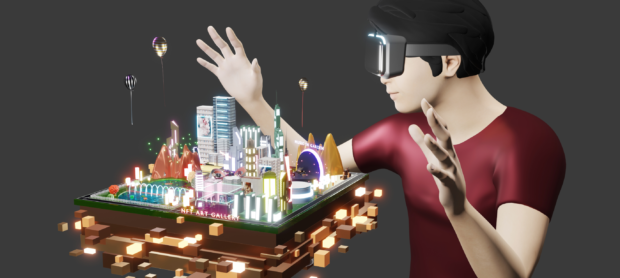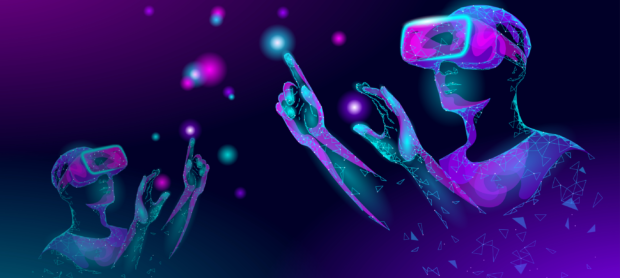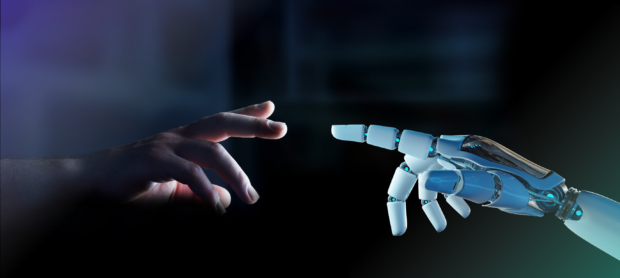In the swiftly metamorphosing realm of technology, two groundbreaking innovations have emerged as catalysts for change: Augmented Reality (AR) and Virtual Reality (VR). As these enthralling advancements gain sophistication and ubiquity, their reach extends beyond the confines of gaming and amusement, unveiling boundless potential across a diverse array of sectors.
AR and VR operate by superimposing digital constructs onto tangible surroundings (AR) or forging entirely novel virtual realms (VR). Through AR, users effortlessly tap into real-time data, interacting with digital components artfully woven into their environment. Conversely, VR whisks users into a thoroughly immersive, computer-generated cosmos, offering an arresting experience that obfuscates the demarcation between virtual and physical realities.
The vast potential of AR and VR permeates myriad industries, presenting innumerable prospects to redefine our methodologies in tackling challenges, communication, and cooperation. Among the most tantalizing applications lie in the realms of education, healthcare, and tourism. These sectors have already commenced their dalliance with AR and VR’s transformative capabilities, harnessing their power to heighten user experiences, optimize processes, and forge innovative pathways for expansion.
Applications of AR/VR in Education
Improving Educational Experiences
AR and VR technologies provide exceptional prospects for designing engaging and immersive courses. Through the use of these technologies, students may interact more actively and individually with the instructional material, which improves their motivation, comprehension, and retention. For instance, in a virtual or augmented environment, students may edit digital models of complicated chemicals, engage with virtual historical people, or explore the solar system in 3D.
Thanks to AR and VR, students may virtually go to locations and participate in activities that would otherwise be difficult or impossible owing to cost, accessibility, or safety issues. Students may tour faraway sites, take in historical events, or do experiments in a risk-free setting via virtual field excursions and simulations. In addition to fostering a better feeling of interest and engagement, these immersive experiences provide a deeper comprehension of the subject matter.
Education for Special Needs
Learning environments that are specifically tailored to the requirements of students with impairments or learning problems are possible with the help of AR and VR technology. Teachers may address individual needs and accommodate different learning styles by designing individualized learning environments. Students with autism, for instance, may practice social skills in a safe and predictable virtual environment, while those who have dyslexia can take advantage of tailored text overlays and audio signals.
By offering inclusive and accessible educational experiences, AR and VR solutions may aid in removing obstacles to learning. Different physical, sensory, or cognitive disabilities may be accommodated by these technology, enhancing equity in education for all students. For instance, visually challenged students may explore 3D audio representations of things, while students with mobility issues can use alternate input devices to traverse virtual settings.
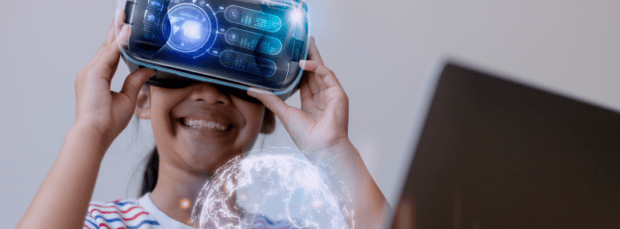
Training and Development of Skills
Augmented reality (AR) and virtual reality (VR) technology may imitate real-world situations for skill development and vocational training. Students may receive practical experience in a safe and regulated setting for anything from performing medical procedures to learning how to fix complicated technology. With this immersive training method, students are better prepared for practical scenarios and retain more information.
Remote collaboration is made possible by AR and VR platforms, enabling students and teachers from different parts of the globe to collaborate in virtual classrooms. By allowing users to collaborate on projects, exchange ideas, and have interactive conversations regardless of their physical location, these tools promote communication, cooperation, and problem-solving abilities.
Challenges and possible improvements
While AR and VR technologies have the potential to completely transform education, they also come with a number of issues that need to be resolved. Widespread adoption may be hampered by problems including:
– Expensive prices
– Restricted hardware access
– Worries about privacy and data security
But as these technologies develop, it’s hoped that fresh approaches to solving these problems will surface, making AR and VR applications in education more usable and efficient.
Applications of AR/VR in Healthcare
Medical Education and Training
Virtual surgery simulations: AR and VR technologies have developed into useful teaching and learning aids in the medical industry, especially in the surgical area. Medical personnel and students may perform difficult operations safely thanks to virtual surgical simulators. Before carrying out procedures on live patients, trainers may polish their abilities and gain confidence using these simulators, which can remarkably accurately imitate real-life conditions.
Clinical case studies in immersive settings: AR and VR may be used to construct immersive clinical case studies, giving medical professionals the chance to consider diverse situations and reach important judgments in a safe setting. This immersive training method aids in the development of diagnostic and decision-making abilities in medical professionals, better preparing them for circumstances they would face in the real world.
Medical Care and Rehabilitation for Patients
Virtual reality exposure treatment (VRET): VRET is one of the most exciting uses of virtual reality in medicine. VRET is used to treat phobias, anxiety disorders, and post-traumatic stress disorder (PTSD), among other psychiatric illnesses. The gradual exposure of patients to virtual surroundings that mimic their anxieties or triggers aids in the development of coping mechanisms and desensitization to the stimuli in a secure and controlled environment.
Physical therapy and pain management: Physical rehabilitation and pain management are two more areas in which AR and VR technology may be very helpful. Patients may execute required exercises and treatment sessions with increased motivation and adherence by combining fascinating and immersive virtual worlds. Additionally, by offering patients a diversion and assisting them in coping with suffering, VR has been demonstrated to be useful in controlling both acute and chronic pain.
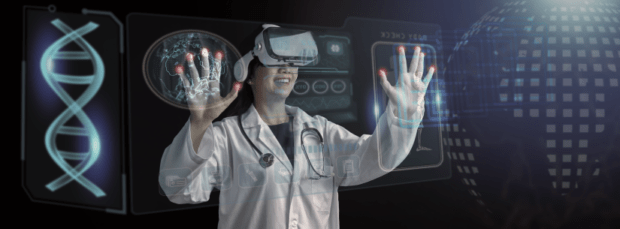
Telemedicine and remote medical treatment
Diagnostics and consultations aided by augmented reality: As telemedicine spreads, augmented reality technology may improve remote diagnostics and consultations by superimposing digital data onto patients’ actual environs. For instance, AR may provide medical practitioners access to real-time patient data during video consultations, such as vital signs and medical records, enhancing the general effectiveness and quality of distant treatment.
VR-based support groups and therapy sessions: Support groups and therapy sessions may be facilitated remotely, bringing members together and fostering a feeling of presence even when they are geographically separated. These online settings may provide patients with privacy and convenience, making it simpler for them to get the help they need regardless of location or logistical issues.
Applications of AR/VR in Tourism and Travel
Improved Travel Planning
Interactive previews and virtual tours of hotels, attractions, and local landmarks are available thanks to AR and VR technology, which may be utilized to improve vacation planning. This helps visitors to plan their travels more intelligently and according to their interests and requirements.
By fusing AR and VR technologies with artificial intelligence and machine learning, it is possible to provide customized travel suggestions that are based on the interests and preferences of the user. These systems may provide appropriate suggestions for activities, sights, and lodging by examining user behavior and travel history, which makes trip planning easier and more fun.
Travel Enhancements On-Site
By offering guided tours and navigational aid, AR technology may enhance off-site travel experiences. By pointing their cellphones towards specified areas, users of AR apps may instantly access information about their surroundings, such as historical facts, restaurant reviews, or instructions.
AR and VR are also capable of being utilized to create interactive cultural and historical experiences that bring the past to life. These technologies may provide visitors with a richer knowledge and appreciation of a destination’s history and culture by superimposing digital material over real-world places.
Future of VR and AR in Travel and Tourism
Virtual and actual experiences must be balanced, and the tourism industry must discover methods to do this as AR and VR technology develops further. While virtual travel may have certain advantages of its own, it is crucial to remember the significance of real-world, genuine encounters. Travel companies should work to incorporate AR and VR in a manner that complements rather than displaces current travel experiences.
By lowering the environmental effects of travel, AR and VR technologies have the potential to support more environmentally friendly tourist practices. Virtual travel may assist reduce overtourism in well-traveled areas, and augmented reality tours can encourage responsible travel and eco-friendly activities. The tourism industry can contribute to a more sustainable future while still providing passengers with rich and interesting experiences by adopting these technologies.

Final Thoughts
In this article, we’ve looked at the enormous potential of augmented reality and virtual reality in the fields of tourism, healthcare, and education. The way we study, heal, and navigate the globe is changing thanks to augmented reality (AR) and virtual reality (VR), which range from immersive learning experiences to cutting-edge medical treatments. These innovative technologies are dismantling obstacles, improving accessibility, and opening up fresh possibilities for development and innovation across several industries.
It is impossible to exaggerate the revolutionary potential of AR and VR technology. We must deal with the difficulties brought by these developments even as we push the limits of what is conceivable. We can make sure that the promise of AR and VR is utilized ethically and sustainably by encouraging cooperation between experts, decision-makers, and technology developers.
The potential for AR and VR applications are essentially limitless, thus we encourage additional research and development in these areas. We may anticipate a future that is more connected, inclusive, and dynamic than ever as we work to fully realize the potential of these immersive technologies.
Are you prepared to make your AR or VR concept a reality? Eventyr is ready to assist! To make your concept a reality, our highly skilled professional team will collaborate with you under your direction. Our professionals are committed to assisting you in utilizing the power of AR and VR in your sector, from idea to execution. Take advantage of the chance to lead this technological revolution by not passing it up. For further details, contact us right now, and let’s start on this thrilling trip together.

